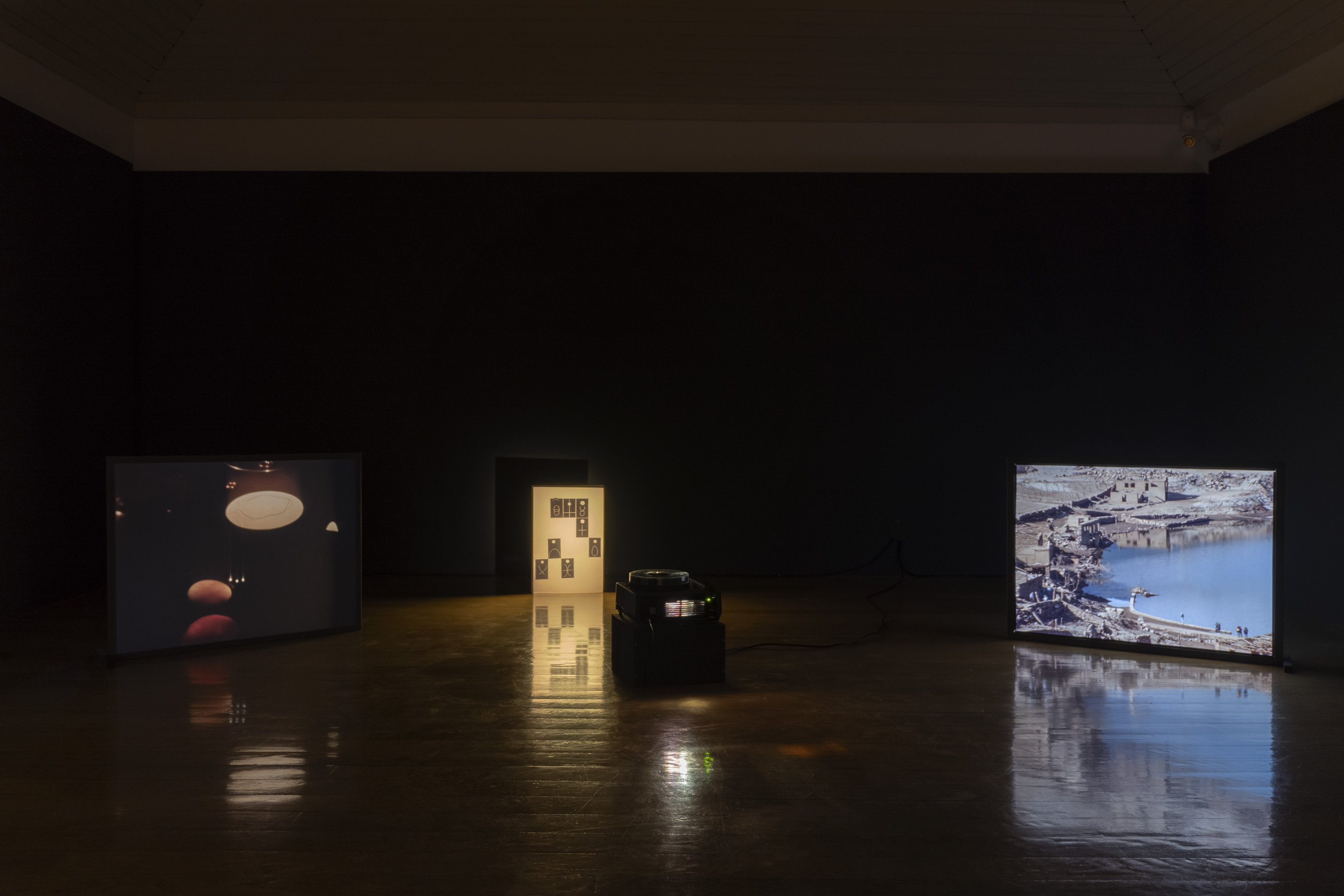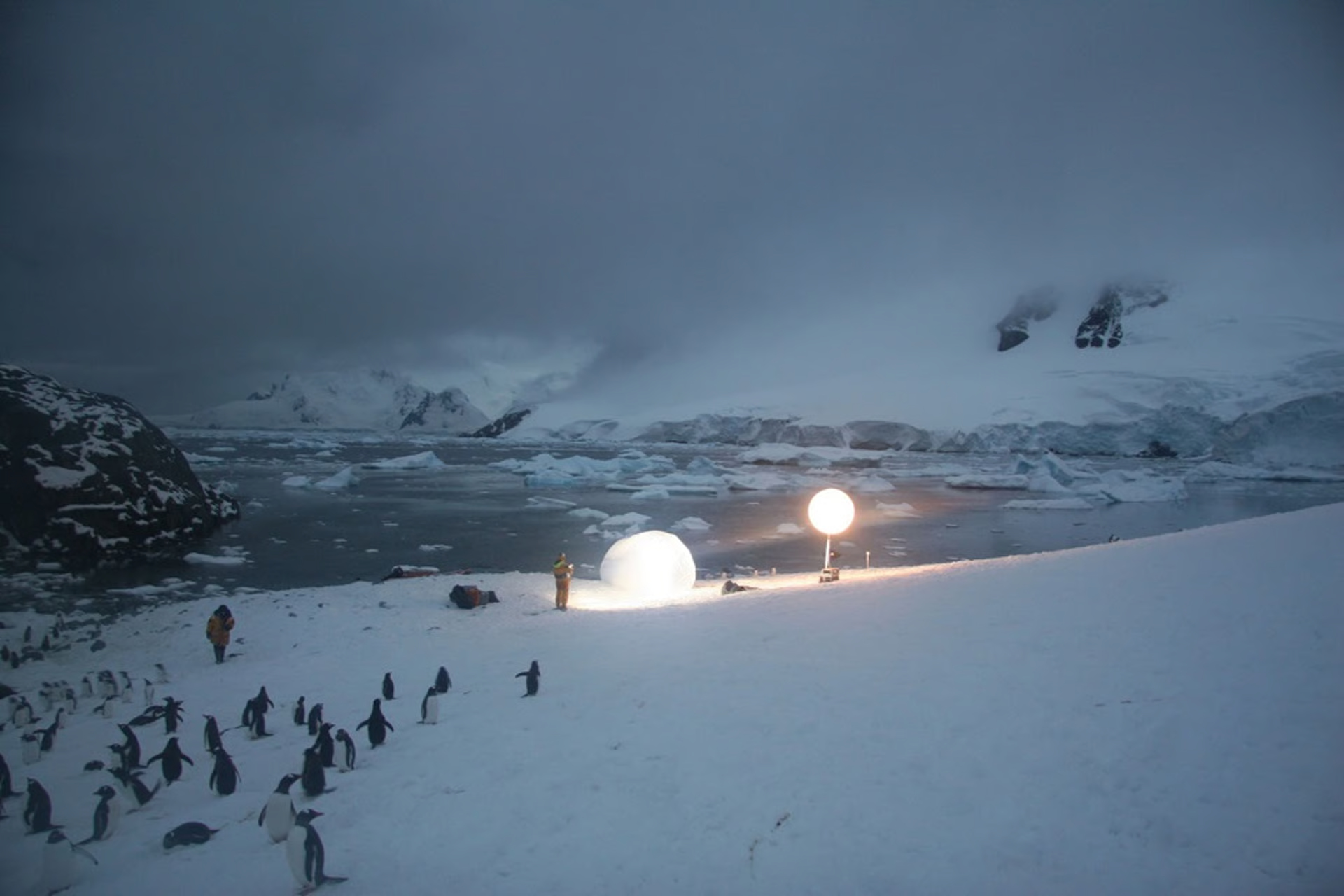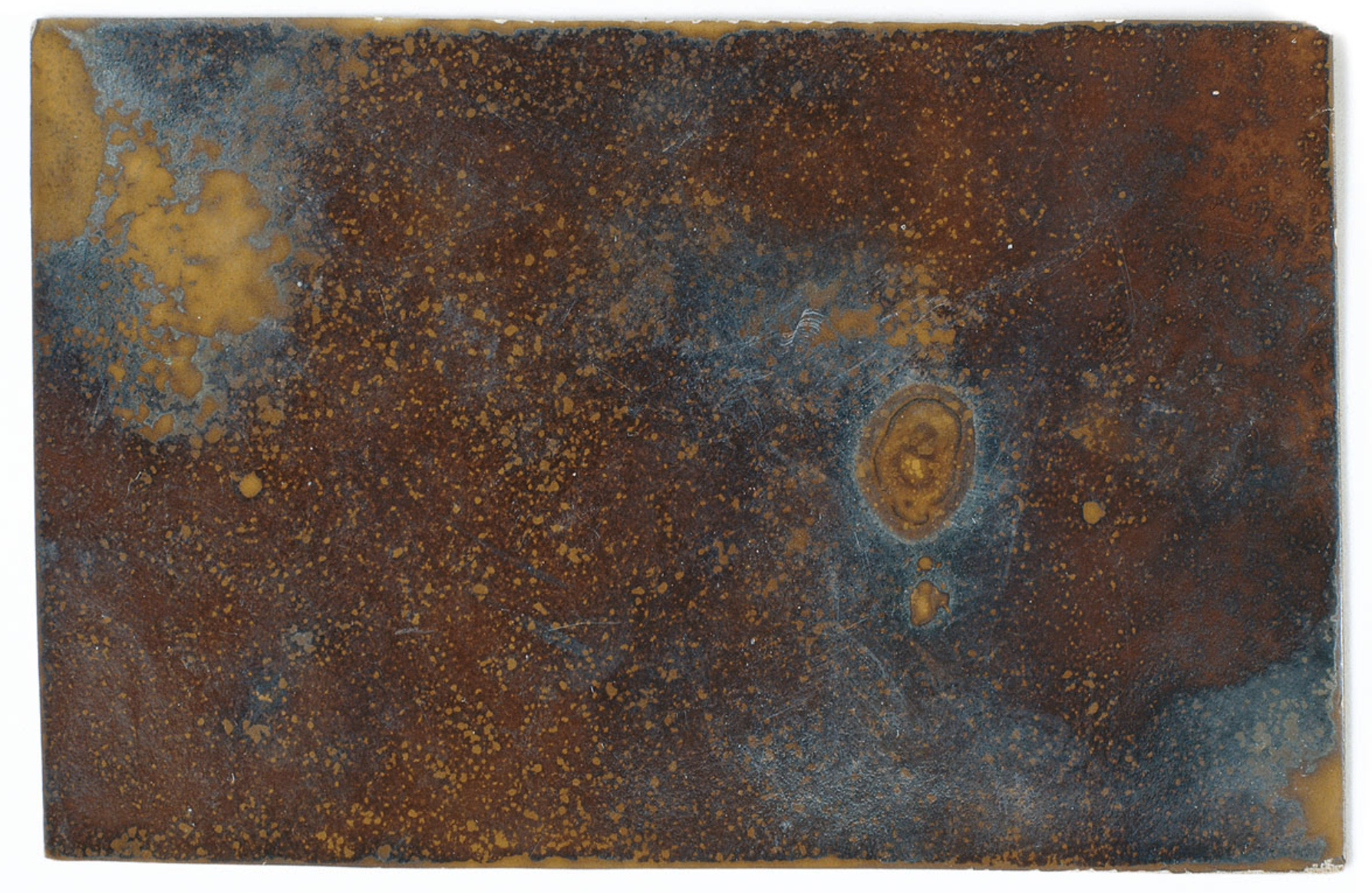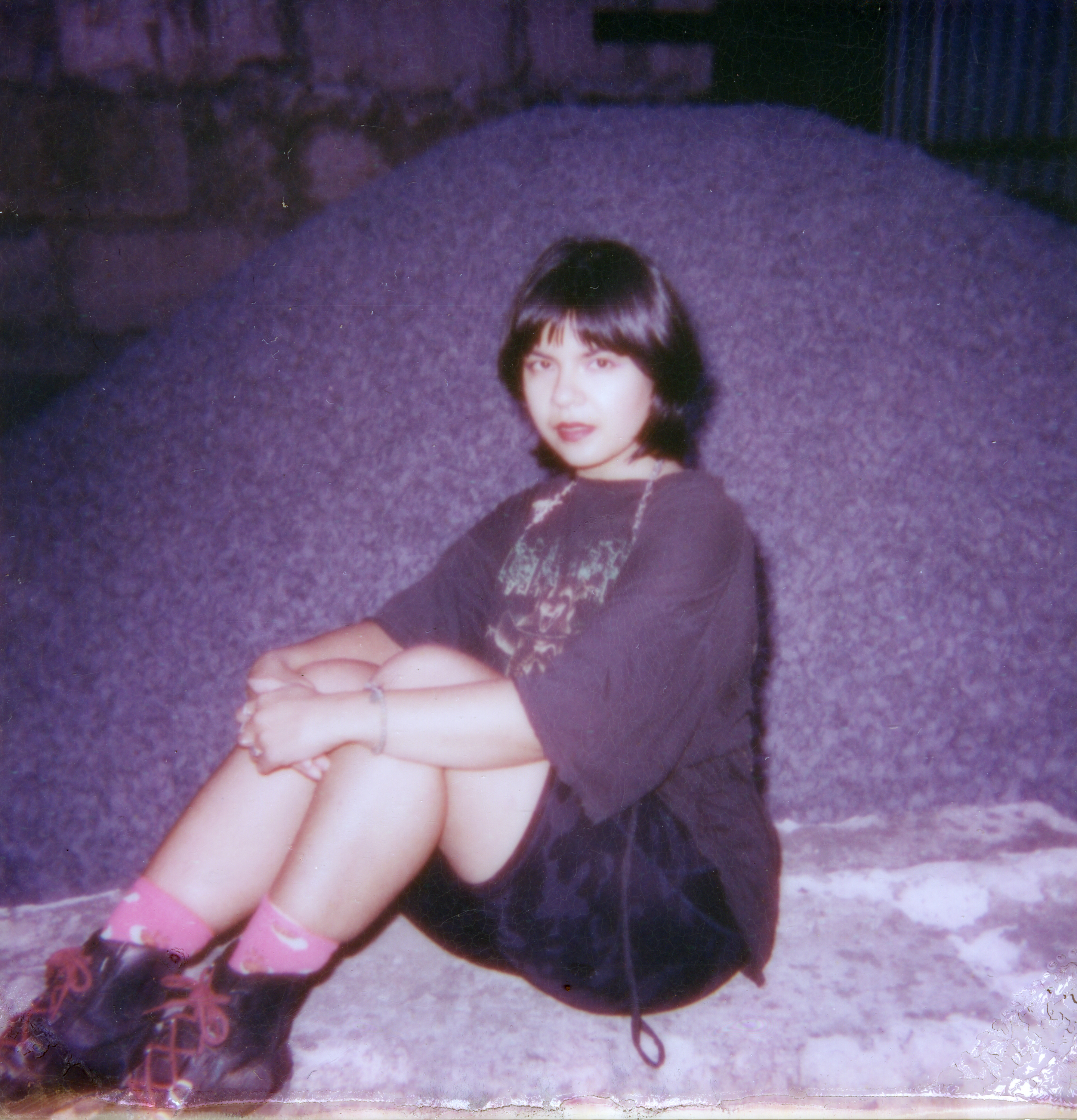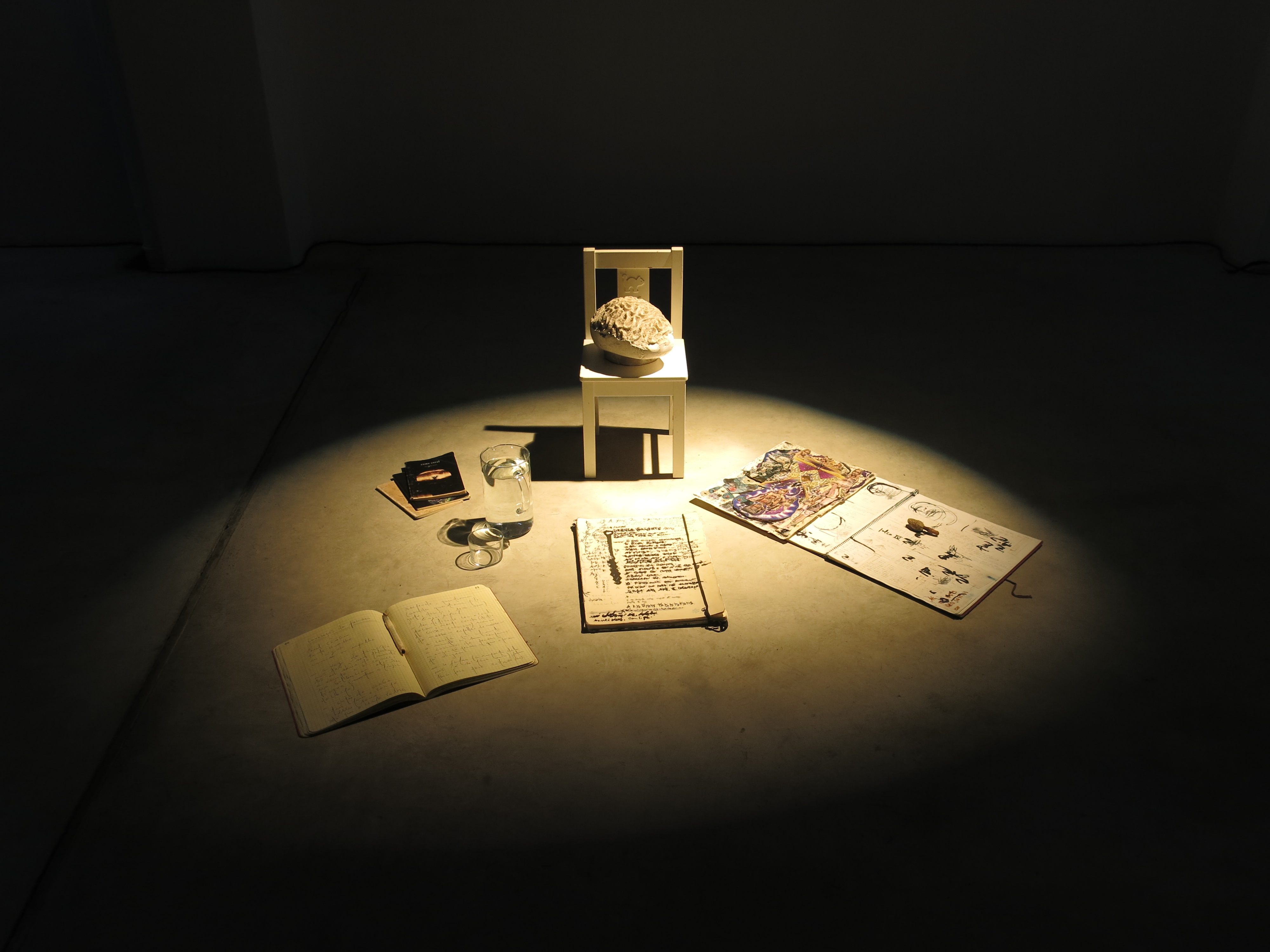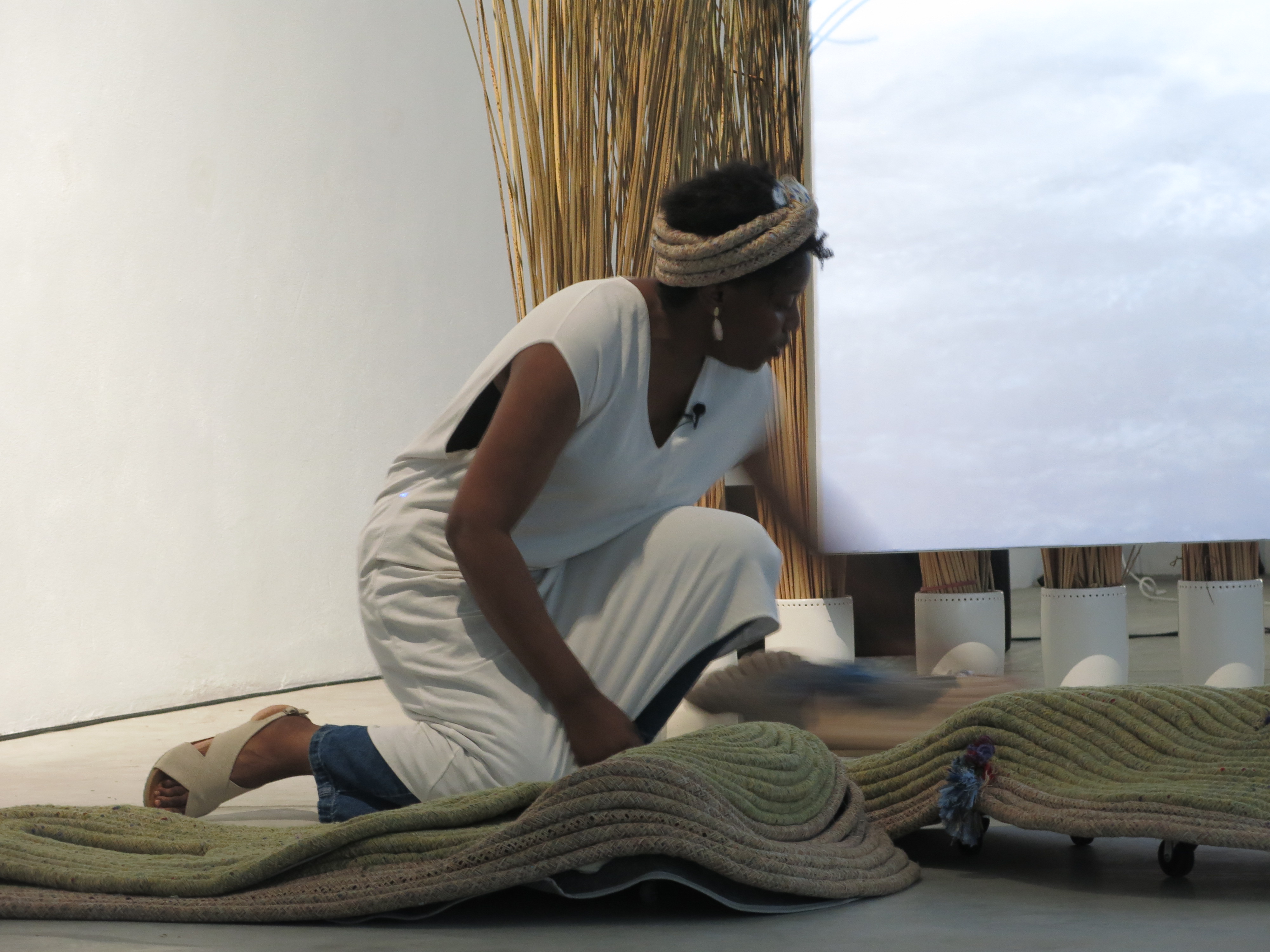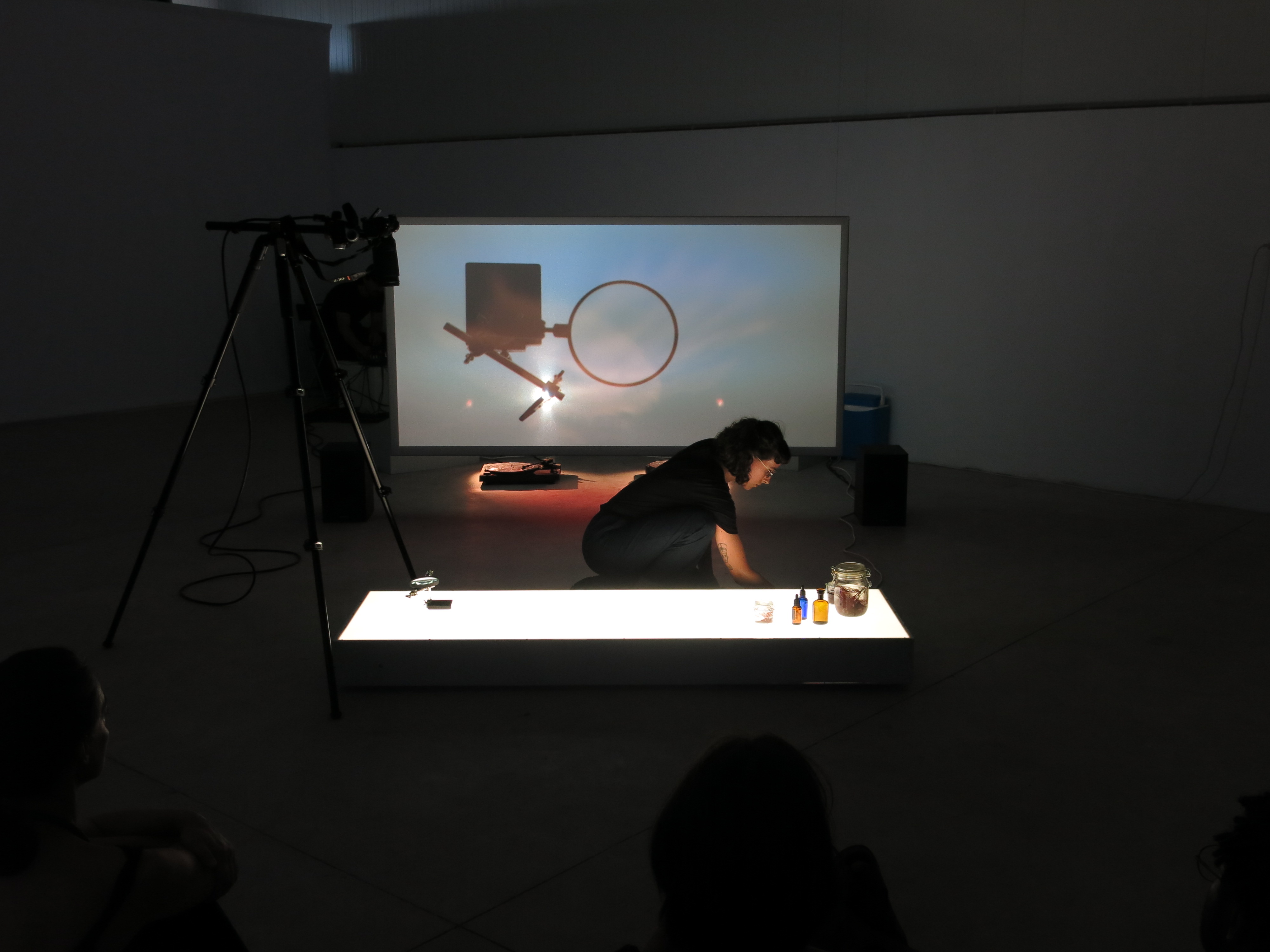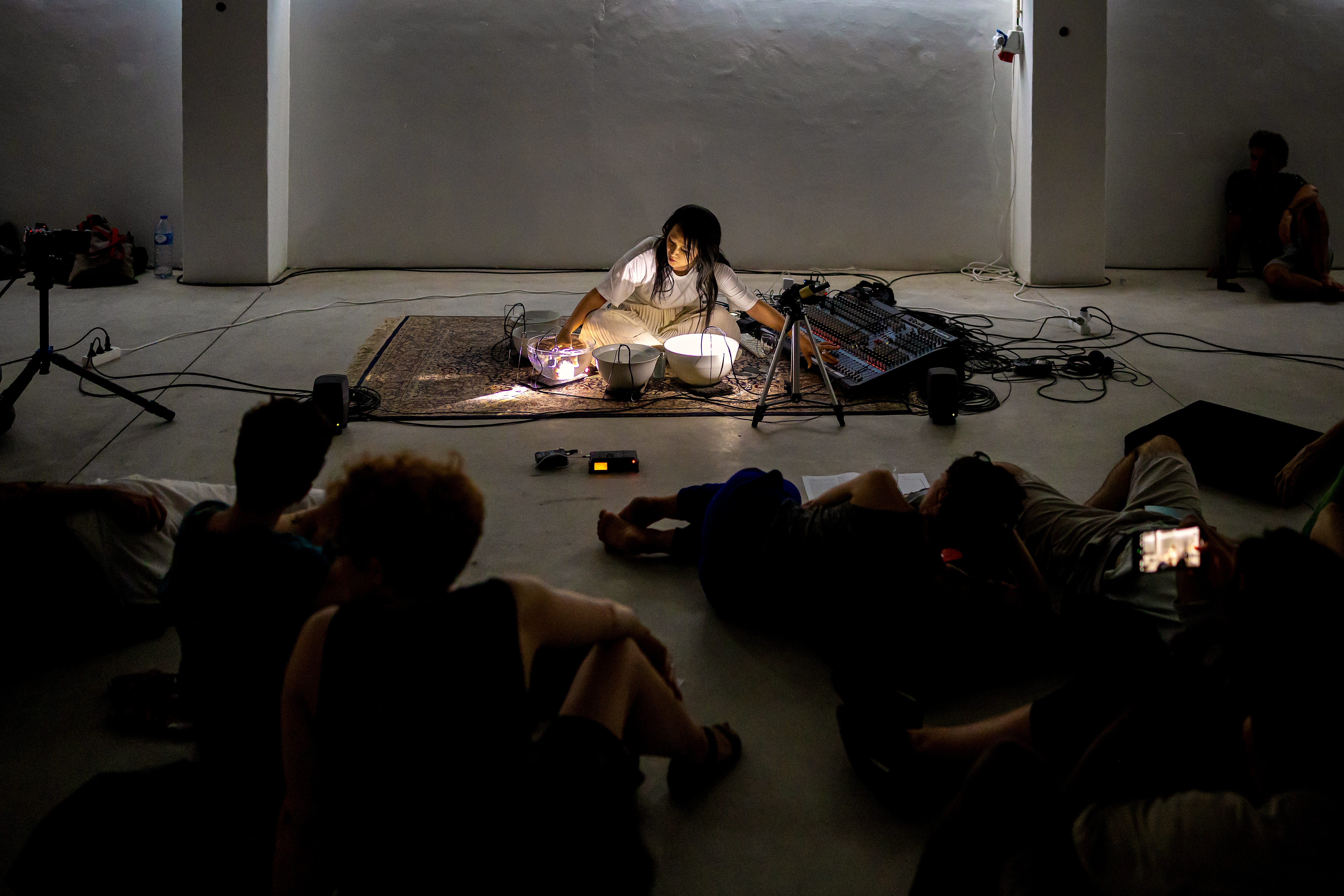
On Hybridity and The Poetics of Resistance
Cover: Diana Policarpo, Underground Allies, 2025. Courtesy of the artist.
Publishing is a political act of resistance—and so is reading.
On Hybridity and The Poetics of Resistance, developed by Contemporânea across 2025 and 2026, operates within the realms of artistic creation, publishing, and programming. The project comprises two exhibitions, two performance series, two public programmes, listening sessions, screenings, and two print and digital editions. It is a collaborative, cross-disciplinary proposal that echoes the dynamics of contemporary artistic practices asserting themselves as interdisciplinary, global, and polysemic. As a whole, it seeks to celebrate hybrid worlds—hybridity being a process of negotiation and dialogue that enables new forms of knowledge. Exploring the relationship between moving image, performance, and sound, it focuses on artistic practices that problematise these very notions. Through an expanded process, the visual, the performative, the sonic, and the digital become instruments of interaction and contamination.
The concept of the hybrid is commonly associated with mythology, inhabited by fantastic creatures of mixed nature, as well as with biology, the military-industrial complex, post-industrial capitalism, artificial intelligence, and new technologies. In a more straightforward sense, it implies the crossing of two or more elements to create a third. Within the context of contemporary art, which has evolved towards models where seemingly opposing dimensions interact to create hybrid forms, it is characterised by notions of flexibility and fluidity, diversity and cooperation, agency and disciplinary crossing, thereby embodying the sensitive mutations of the present. This process of negotiation reinforces the poetic and political potential of art, as the hybrid space reveals an unstable, fragile condition of fusion or alienation—a sensitive material, a field of action where multiple possibilities emerge.
Environmental collapse, migration crises, the unregulated progression of AI, and the rise of new fascisms are among the dominant paradigms that reflect a complex cyclical entity. The present moment is haunted by the emergence of new existential territories linked to the imminence of catastrophe (environmental or humanitarian, in the form of total war or totalitarianism); and indeed, their interconnection and interdependence are terrifyingly real. Closely tied to the notion of catastrophe, the idea of utopia (Walter Benjamin and Ernst Bloch) inevitably arises. In revisiting these concepts, it is important to note that utopia, poised between desire and impossibility, generates conflicting tensions and irreconcilable perspectives.
The ruin of contemporaneity incites a sense of resilience, a will to reassemble the world in the face of present anxieties, to restructure scales of value, roles, times, and priorities. In this context, the capacity to build mechanisms of resistance and non-linear structures for questioning current conditions becomes indispensable. Contemporary artistic cartographies are bound to resist, to break obsolete stereotypes and paradigms, and to seek forms of direct action in the world—to pose fundamental questions and situate them within today’s state of emergency, as we witness the erosion of democratic structures. The turn towards a darker political horizon is real; the violence of present-day political discourse, rooted in authoritarian ideologies, is carefully orchestrated to produce instability and fear. Violence dehumanises, and the toxic presence of fascism takes many forms in different contexts. What, then, can be done in this “end-of-the-world” backdrop, where the spectre of a lost future is haunted by apocalyptic visions? The war machine is ready, the algorithms in motion. Is it possible to find hope in fragility? A form of resistance and resilience that challenges its own limits and moves through the cracks of time, the voids of loss, the ruptures of war, and the fractured mirror of democracy?
And art—does it really matter? Though reception is individual, the contemporary experience of hybridity extends across a variety of elements, materials, and disciplines; it traverses and interweaves different fields of knowledge, opening up new possibilities for connection even amid fragmentation. It lives (in) its own speculative, uncertain, delirious time. Indeed, perhaps it is necessary to grasp the strange logic of current developments in order to give shape to different, at-times complex, inaccessible, unstable realities. For by gathering those fragments, by embracing that fragility, our action may move beyond the logic of absolutist moralism or radicalism towards an informed resistance and a deeper understanding of what it means to be human, without reverting to an anthropocentric worldview or discourse.
And through time, through matter, eye to eye, hope—ever-changing, shimmering, fragile—contemplates life, in all its beautiful, slow catastrophe.
—Celina Brás
Exhibition
Carma Invertido [Inverted Karma] currently ongoing at Convento dos Capuchos, Almada, until October 25
Screening
A screening focused on a selection of film projects by Pierre Huyghe, curated by Eduarda Neves. 9 October, 7:15 pm — Batalha Centro de Cinema, Porto
Listening Sessions
Conference
Audio Performances
Performances
Fluid Prospections
